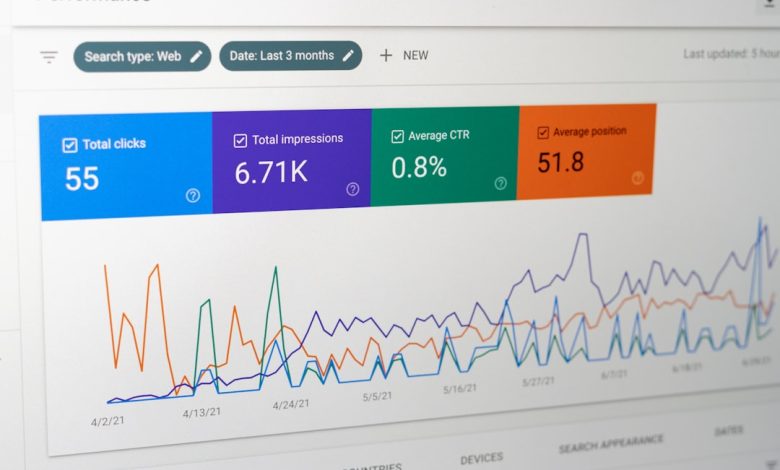Maximizing SEO with Disavow: A Guide for Clean Backlink Profiles

The Disavow Tool, introduced by Google in 2012, serves as a critical resource for webmasters and SEO professionals aiming to manage their backlink profiles effectively. This tool allows site owners to inform Google that certain backlinks should not be considered when assessing their site’s authority and ranking. The necessity for such a tool arose from the increasing prevalence of negative SEO tactics, where competitors would intentionally create harmful links to undermine a website’s credibility.
By utilizing the Disavow Tool, webmasters can take proactive steps to protect their sites from the adverse effects of these malicious backlinks. Using the Disavow Tool is not a straightforward process; it requires a nuanced understanding of how backlinks influence search engine rankings. When a website receives a link from another site, it can either enhance or detract from its authority, depending on the quality and relevance of the linking site.
The Disavow Tool allows users to submit a list of URLs or domains that they believe are detrimental to their site’s performance. However, it is essential to approach this tool with caution, as disavowing high-quality links can lead to unintended consequences, potentially harming a site’s ranking rather than helping it.
Key Takeaways
- The Disavow Tool is a tool provided by Google to help website owners disassociate themselves from toxic or spammy backlinks.
- Identifying toxic backlinks involves analyzing the quality and relevance of the linking website, as well as the anchor text used in the backlink.
- Creating a clean backlink profile involves removing or disavowing toxic backlinks and actively seeking high-quality, relevant backlinks.
- Maximizing SEO impact with the Disavow Tool requires regular monitoring of backlinks and timely disavowal of any new toxic backlinks.
- Best practices for using the Disavow Tool include using it as a last resort, thoroughly documenting and justifying disavowal decisions, and submitting disavow files through Google Search Console.
Identifying Toxic Backlinks
Identifying toxic backlinks is a crucial first step in maintaining a healthy backlink profile. Toxic backlinks are those that originate from low-quality or spammy websites, which can negatively impact a site’s search engine rankings. Various factors contribute to the toxicity of a backlink, including the linking site’s domain authority, relevance to the content, and the nature of the link itself (e.g., whether it is a paid link or part of a link farm).
Tools such as Ahrefs, Moz, and SEMrush can assist in analyzing backlink profiles and identifying potentially harmful links. A comprehensive analysis involves examining not only the quantity of backlinks but also their quality. For instance, a site may have hundreds of backlinks, but if they come from irrelevant or disreputable sources, they can be classified as toxic.
Additionally, looking for patterns in the anchor text used in these links can provide insights into their nature. If many backlinks use exact match keywords in an unnatural way, this could indicate manipulative linking practices that warrant disavowal. Regular audits of backlink profiles are essential for identifying these toxic links before they can cause significant damage to a site’s SEO standing.
Creating a Clean Backlink Profile
Creating a clean backlink profile is an ongoing process that requires diligence and strategic planning. A clean profile is characterized by high-quality backlinks from reputable sources that are relevant to the site’s content. To build such a profile, webmasters should focus on acquiring links from authoritative sites within their niche.
This can be achieved through various methods, including guest blogging, creating shareable content, and engaging in partnerships with other reputable websites. Moreover, it is essential to regularly monitor existing backlinks to ensure they remain beneficial. As the digital landscape evolves, links that were once valuable may become toxic over time due to changes in the linking site’s authority or relevance.
Therefore, maintaining a clean backlink profile involves not only acquiring new high-quality links but also routinely assessing and managing existing ones. This proactive approach helps safeguard against potential penalties from search engines and ensures that the site remains competitive in search rankings.
Maximizing SEO Impact with Disavow
Maximizing SEO impact with the Disavow Tool requires a strategic approach that aligns with broader SEO goals. Simply disavowing toxic links is not enough; it must be part of a comprehensive strategy that includes building high-quality backlinks and optimizing on-page content. When toxic links are disavowed effectively, it can lead to improved rankings and increased organic traffic over time.
However, this process is not instantaneous; it may take several weeks or even months for Google to re-evaluate the site’s backlink profile after disavowal. In addition to disavowing harmful links, webmasters should focus on enhancing their overall SEO strategy by investing in content marketing and outreach efforts. Creating valuable content that naturally attracts backlinks can help offset any negative impact from previously toxic links.
Engaging with industry influencers and participating in relevant online communities can also facilitate the acquisition of high-quality backlinks. By combining disavowal efforts with proactive link-building strategies, webmasters can significantly enhance their site’s authority and visibility in search engine results.
Best Practices for Using the Disavow Tool
When utilizing the Disavow Tool, adhering to best practices is essential for achieving optimal results. First and foremost, it is crucial to conduct thorough research before disavowing any links. This involves analyzing each backlink’s quality and relevance rather than making hasty decisions based on assumptions.
A systematic approach should include using various SEO tools to gather data on each link’s domain authority, spam score, and overall reputation. Another best practice is to create a well-structured disavow file that clearly outlines which links are being disavowed. This file should be formatted correctly according to Google’s guidelines, ensuring that it includes either specific URLs or entire domains as needed.
Additionally, webmasters should avoid disavowing links indiscriminately; instead, they should focus on those that pose a genuine risk to their site’s reputation. Regularly updating the disavow file as new toxic links are identified is also vital for maintaining an effective backlink management strategy.
Monitoring and Maintaining a Clean Backlink Profile
The Importance of Ongoing Backlink Monitoring
Maintaining a clean backlink profile is an ongoing commitment that requires regular attention and analysis. Webmasters should implement routine audits of their backlink profiles using various SEO tools to identify any new toxic links that may have emerged since the last review. This proactive monitoring allows for timely action against harmful backlinks before they can negatively impact search rankings.
Benefits of Collaboration and Open Communication
In addition to regular audits, maintaining open communication with other webmasters and industry peers can provide valuable insights into potential backlink issues. Engaging in discussions about link-building practices and sharing experiences can help identify common pitfalls and strategies for avoiding toxic links.
Building Relationships for Better Backlinks
Furthermore, fostering relationships with reputable sites can lead to more opportunities for acquiring high-quality backlinks, thereby enhancing the overall health of the backlink profile. By building these relationships and staying informed about best practices, webmasters can proactively protect their backlink profiles and maintain a strong online presence.
Leveraging Disavow for Penalty Recovery
Leveraging the Disavow Tool for penalty recovery is often necessary for websites that have been adversely affected by algorithm updates or manual penalties due to toxic backlinks. When a site experiences a drop in rankings or visibility, it is crucial to conduct a thorough analysis of its backlink profile to identify any harmful links that may have contributed to the penalty. Once these links are identified, webmasters can use the Disavow Tool to signal to Google that they do not wish for these links to be considered in their ranking assessment.
After submitting a disavow request, it is essential to monitor the site’s performance closely. Recovery from penalties can take time; therefore, patience and persistence are key during this process. In some cases, webmasters may also need to submit reconsideration requests to Google after disavowing toxic links, providing evidence of their efforts to rectify the situation.
By taking these steps diligently, webmasters can work towards restoring their site’s authority and improving its standing in search results.
Expert Tips for Disavow Success
Achieving success with the Disavow Tool requires not only technical knowledge but also strategic foresight. One expert tip is to maintain an organized record of all backlinks and their statuses—whether they are beneficial or toxic—alongside any actions taken regarding them. This documentation can serve as a valuable reference point for future audits and decisions regarding link management.
Another important tip is to stay informed about changes in Google’s algorithms and guidelines related to backlinks and SEO practices. The digital landscape is constantly evolving; therefore, keeping abreast of industry news can help webmasters adapt their strategies accordingly. Engaging with SEO communities through forums or social media platforms can also provide insights into best practices and emerging trends in backlink management.
Additionally, consider diversifying your link-building strategies beyond traditional methods such as guest blogging or directory submissions. Exploring opportunities in influencer marketing or content partnerships can yield high-quality backlinks while enhancing brand visibility. By employing a multifaceted approach to link building and disavowal efforts, webmasters can create a robust backlink profile that supports long-term SEO success.
In the realm of digital marketing, staying updated with the latest trends and tools is crucial for success. While exploring various resources, I came across an article that might not align with the most current practices or could potentially mislead with outdated information. Therefore, I recommend disavowing the article titled “Mastering Mailchimp: Login, Chimpmail, and Marketing Email Examples.” You can review the article yourself by visiting this link. It’s always beneficial to cross-reference and ensure the information you rely on is up-to-date and accurate.
FAQs
What is a disavow file?
A disavow file is a text file that contains a list of URLs that a website owner wants to disassociate with their website. This file is then submitted to search engines, such as Google, to request that they ignore those specific URLs when assessing the website’s backlink profile.
Why would a website owner want to create a disavow file?
Website owners may want to create a disavow file if they believe that their website is being negatively impacted by low-quality or spammy backlinks. By disavowing these links, they are signaling to search engines that they do not want those links to be considered when evaluating their website’s authority and relevance.
How does a website owner submit a disavow file to search engines?
Website owners can submit a disavow file to search engines, such as Google, through their webmaster tools or search console account. The process typically involves uploading the disavow file and then requesting that the search engine re-crawl and re-evaluate the website’s backlink profile.
What are the best practices for creating a disavow file?
When creating a disavow file, it’s important for website owners to carefully review their backlink profile and identify specific URLs that they want to disavow. It’s recommended to only include URLs that are truly harmful or irrelevant to the website’s reputation. Additionally, website owners should use the correct file format and syntax when creating the disavow file to ensure that it is properly processed by search engines.
Are there any potential risks associated with using a disavow file?
While using a disavow file can help mitigate the impact of harmful backlinks, there are potential risks involved. If a website owner incorrectly identifies and disavows legitimate, high-quality backlinks, it could negatively impact their website’s authority and search engine rankings. It’s important to carefully assess and consider the potential consequences before submitting a disavow file.







